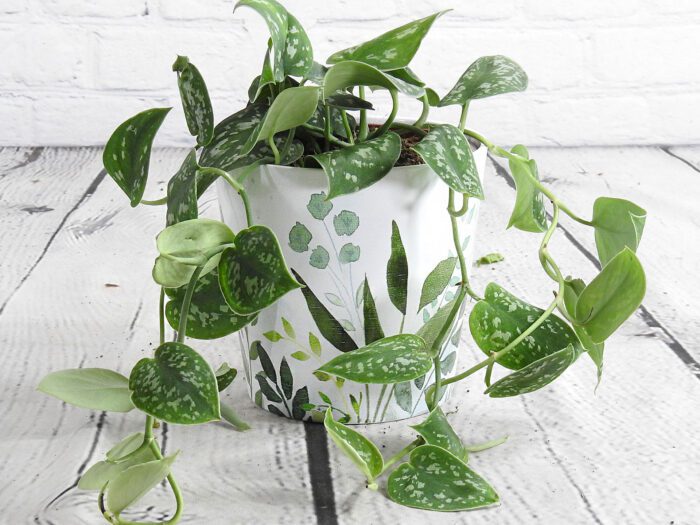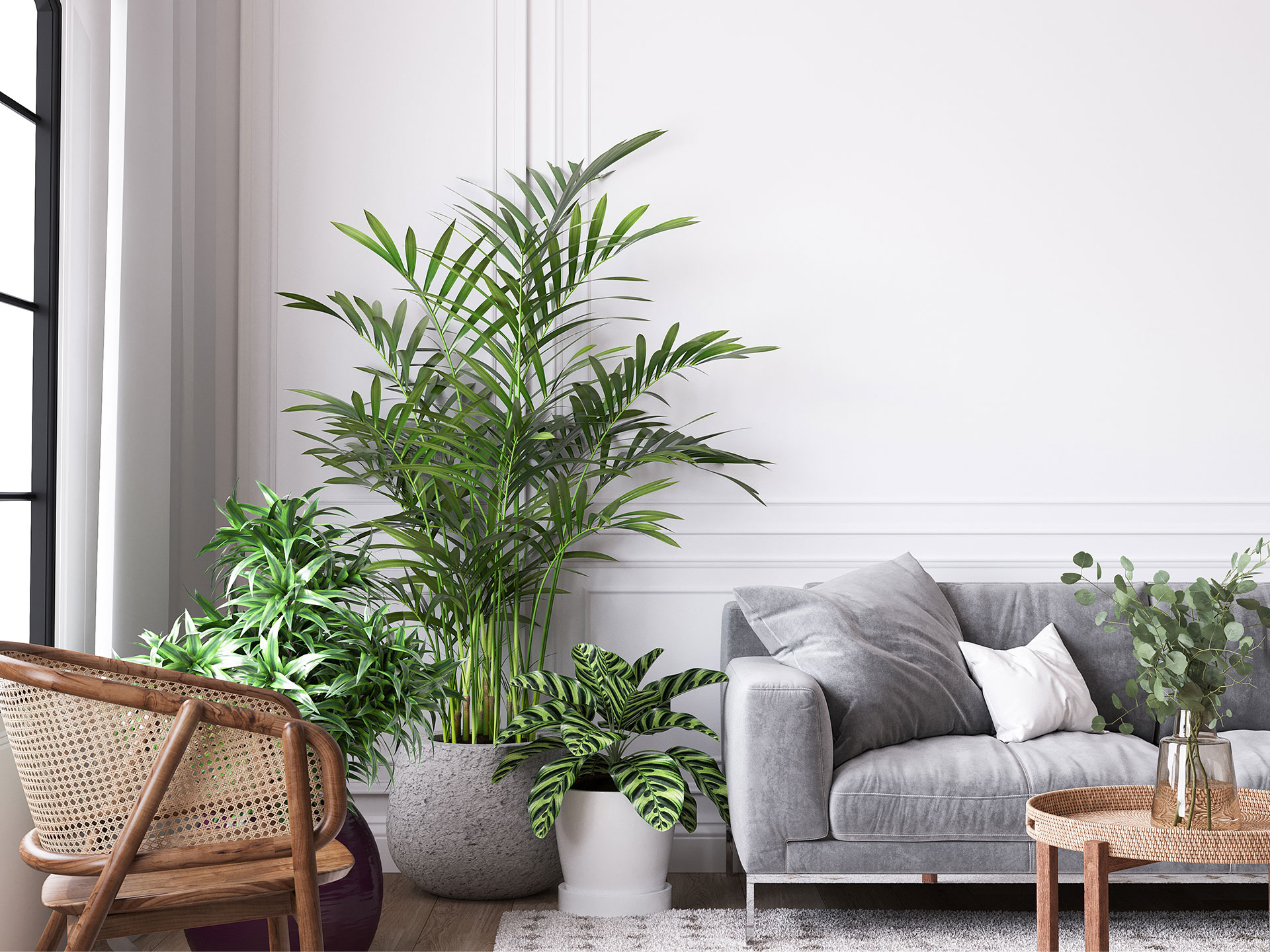
Image Credit: Adobe Stock Photo
The best houseplants you can’t kill
Adding easy-care houseplants to your interiors is an ideal way to bring a room to life, especially as biophilic design has been gaining traction in recent years as a way of connecting with nature in our homes.
Houseplants are not just aesthetically pleasing, there’s also a myriad of health benefits that come with introducing them, from reducing stress and creating a sense of calm to helping filter the air and lowering blood pressure. By increasing humidity and decreasing dust, houseplants can help stave off allergies and some plants give off oxygen at night, helping with a better night’s sleep.
However, with busy lives, caring for your plants isn’t always simple. We’ve narrowed down which houseplants are easy to keep alive, to kickstart your journey into biophilic design and bring the outdoors in.
Prayer plant
The prayer plant, or the Maranta leuconeura to give it its proper name, has the most beautiful markings and is a striking addition to any room. Luckily, they are very easy to maintain. The nickname prayer plant comes from the fact that the leaves, which are normally flat, fold themselves up at night.
With its bold pink veins and green leaves, the prayer plant is native to the Brazilian rainforest and thrives in a warm, humid spot in the house. Pick a shadier location to keep them, and make sure they’re out of direct sunlight.
Keep the soil moist but not soaking (so the top layer of soil is never dry) and you can water your prayer plant less in the winter months. To help with drainage you can add small rocks to the bottom of the pot.
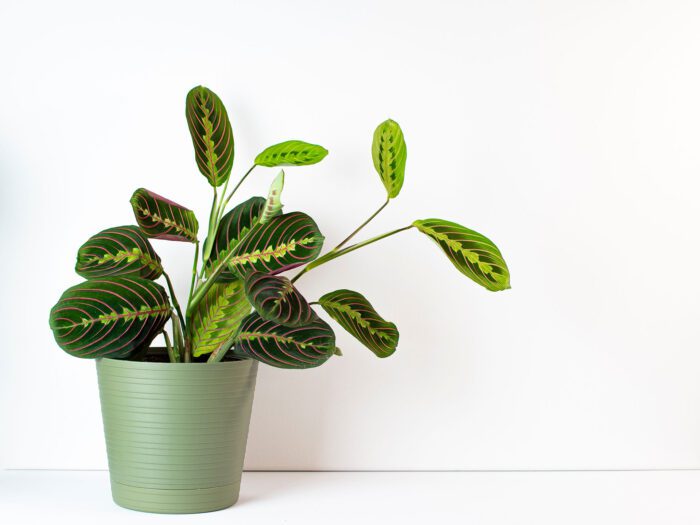
Bromeliad
Another striking houseplant, the Bromeliad has sword shaped leaves and a resplendent brightly coloured bloom on top. They are also native to tropical rainforests and are found growing on trees, where they draw their moisture and nutrients, rather than in the ground.
Like the prayer plant, Bromeliads thrive with warmth, some humidity and light (but not direct sunlight, as this will scorch the leaves).
Keep them watered at the base of the leaves and to increase humidity you can sit them in a gravel-filled saucer with water. Bromeliads are an easy-care houseplant that will bring colour and joy to your decor.
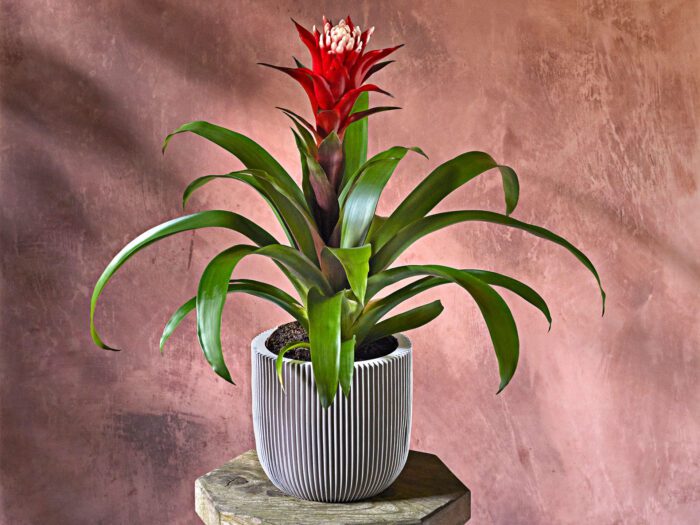
Swiss cheese plant/ Monstera Deliciosa
Despite being known as a Swiss cheese plant (coined because of the natural holes in the leaves), the monstera actually hails from southern Mexico’s tropical forests.
The beautiful leaf shape is one you’ll likely recognise given the huge popularity of the monstera in recent years. It has provided interiors inspiration for everything from bed linen to art prints to wallpaper.
They’re an impressive houseplant to have at home, and one that’s fairly easy to care for. Pot your monstera in well-drained soil and in bright but preferably indirect sunlight. Water every week, and let the soil dry a little between watering, so as not to overwater.
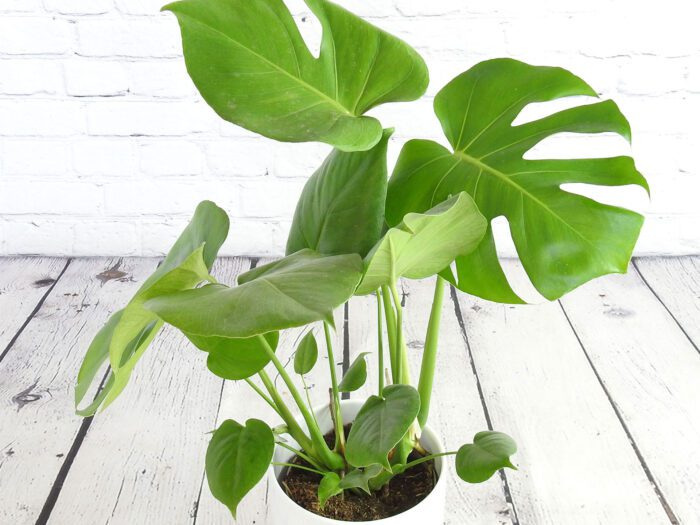
Cactus
Coming in a huge variety of shapes and sizes, cacti are probably the most well-known, easy to care for houseplant. Don’t mistake them for a no-care houseplant however, they do need some maintenance to keep them thriving.
Many cacti’s natural habitat is the desert, so they can survive in more arid climates. Though there are also plenty of types of cacti native to the rainforest, so check where they’re from, to give an indicator on how much light and humidity they will need.
On average you should think about watering every 10 days in the summer and every month in the winter.
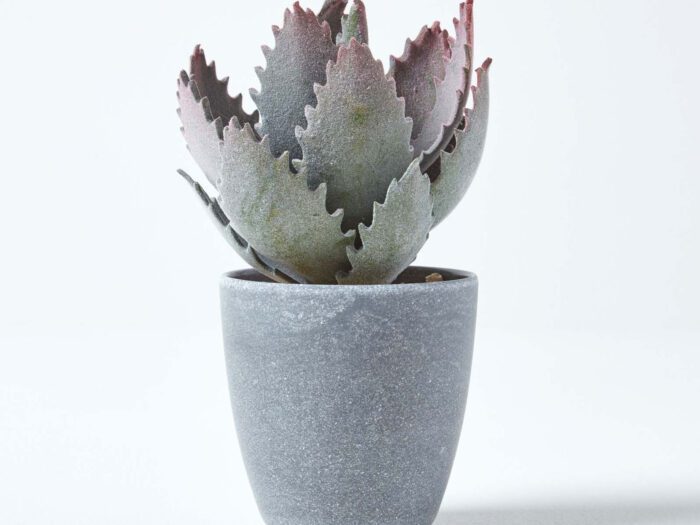
Peace lily
Peace lilies are elegant yet easy to care for house plants to add to your collection. Also known as spathiphyllum (Ikea do a range of sizes) the beautiful flowers look like white sails and they’re a joy-filled plant to grow at home.
Found on South American rainforest floors, peace lilies don’t need a huge amount of watering (in the wild they thrive on the constant drip from the rainforest canopy), so lightly water them and keep the humidity high by misting every couple of days.
Place your peace lily by an east-facing window if you can, for the perfect amount of sunlight.
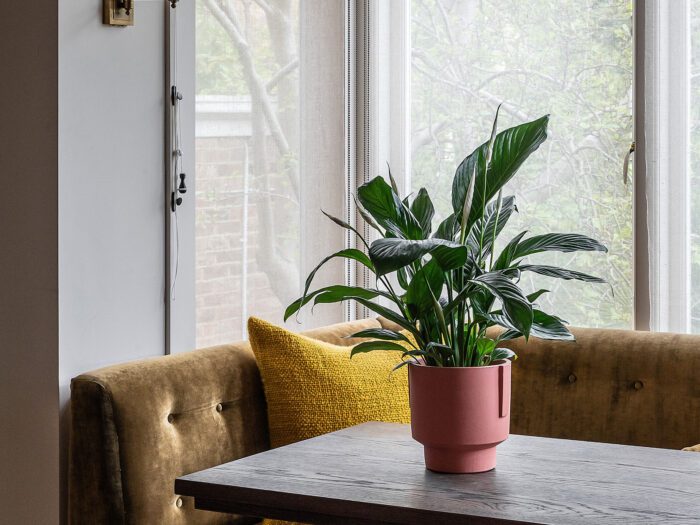
Spider plant
Spider plants are one of the easiest and most adaptable houseplants to grow and are the ideal place to start for your first indoor houseplant. These hardy plants grow quickly and you’ll likely get lots of spiderettes growing from your mother spider plant (they look like spiders dangling off a web, hence getting their name).
Spider plants don’t need much sun exposure, and can thrive in part or full shade, but they do need well-draining soil. They prefer cooler temperatures, so make sure you keep them away from radiators.
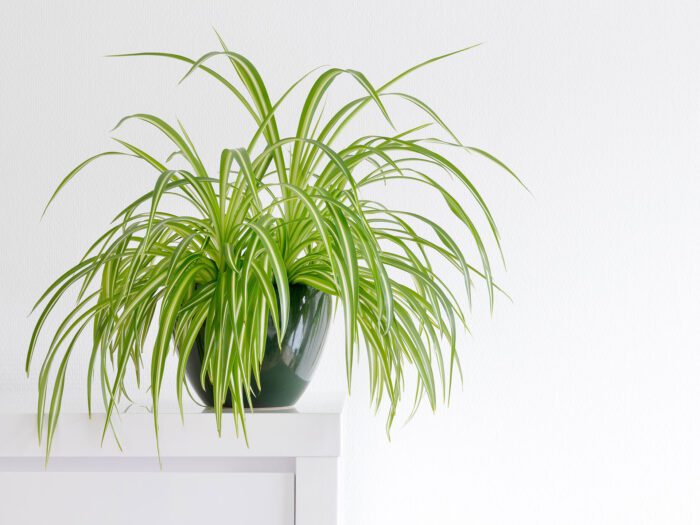
Fern
Ferns date back over 300 million years and are one of the world’s oldest plant groups. With over 12,000 species, there’s plenty to choose from.
When potting ferns the soil needs be lightly moist, not too wet or it could rot the roots.
Ferns prefer humid conditions so try keeping them in the bathroom or kitchen. If the air is too dry, the leaves could turn brown or crispy and they’ll need spritzing with a plant mister. Ferns love a shady spot, given how they grow in the wild (often under the canopy of trees) so keep them out of direct sunlight in your home.
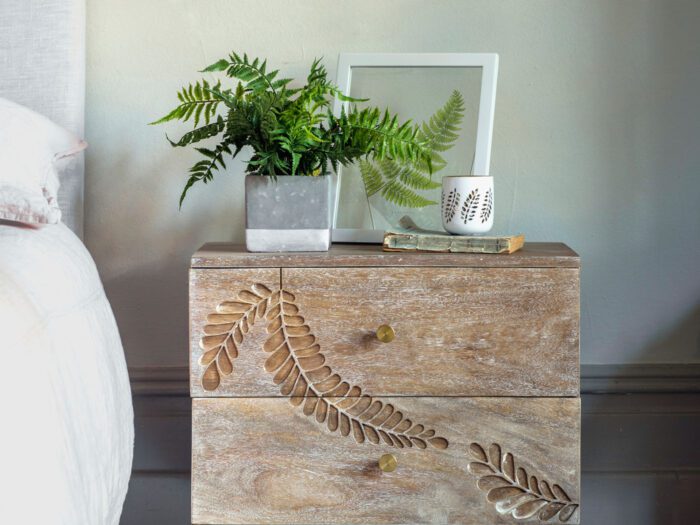
Satin Pothos
If you’re looking for a trailing plant to pot, a satin pathos plant could be the one for you, as they can be trained to grow along shelves (they like to have something to attach to).
Super easy to care for, the satin pathos are ever-green tropical vines, with velvet green leaves that have silvery splashes. Make sure the soil is kept moist, check the top two inches of the soil and if they feel dry, it’s time to water. If the vines wilt or you see the leaves turning yellow, this is a sign of overwatering.
